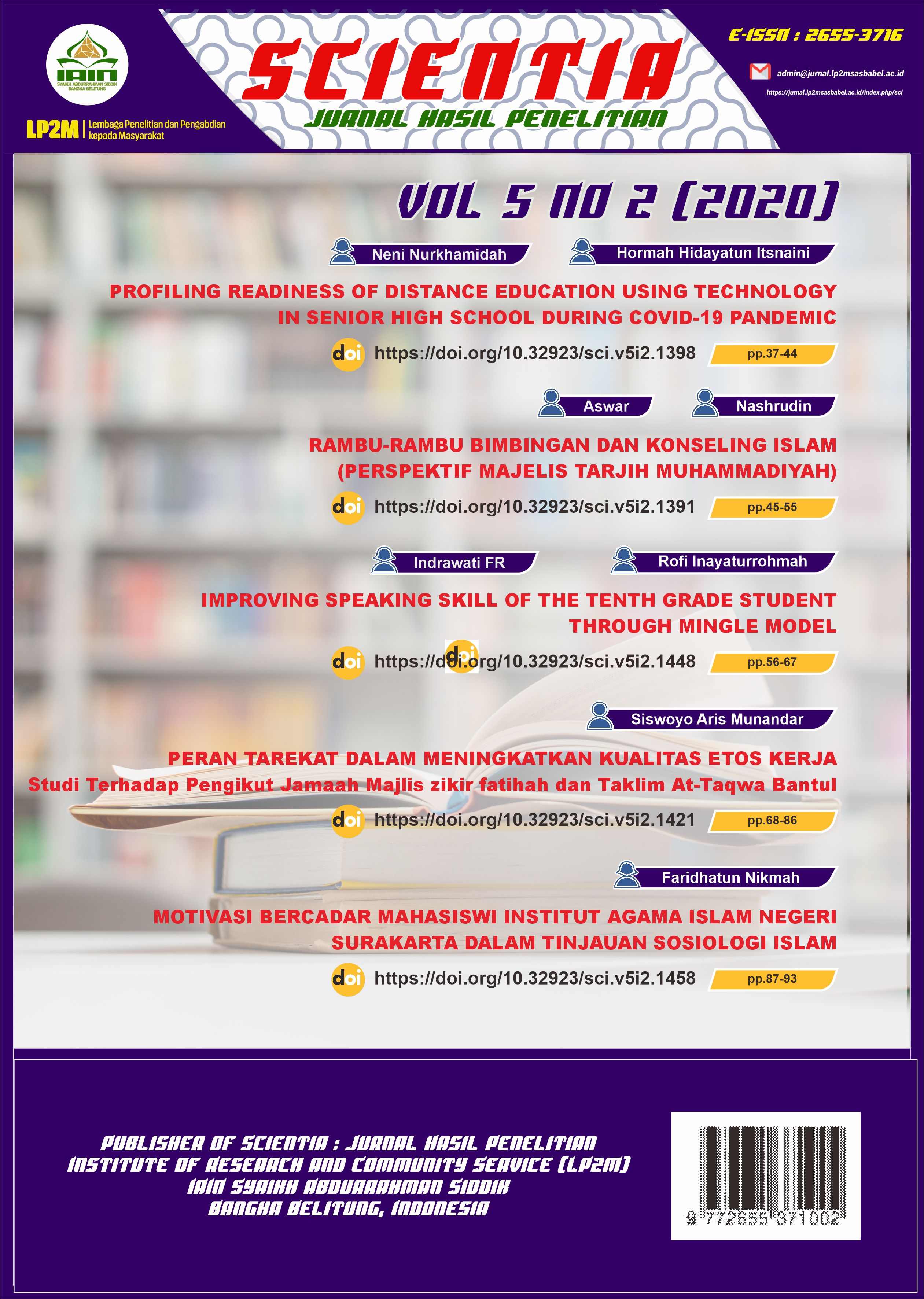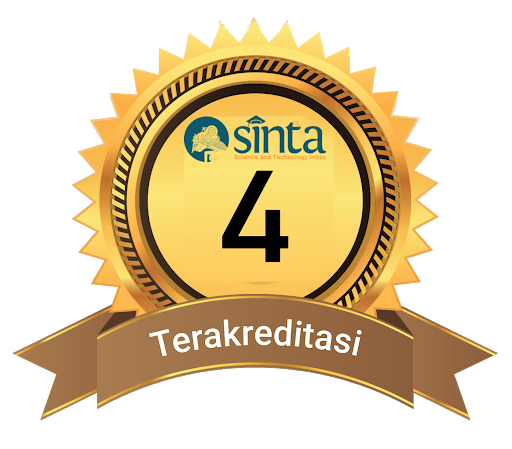MOTIVASI BERCADAR MAHASISWI INSTITUT AGAMA ISLAM NEGERI SURAKARTA DALAM TINJAUAN SOSIOLOGI ISLAM
DOI:
https://doi.org/10.32923/sci.v5i2.1458Keywords:
veil, motivation islamic sociology, IAIN SurakartaAbstract
The phenomenon of women with claws often gets negative views. This is because people think that the veil is identical to fanatics and radicals against religion. Therefore, many communities reject the existence of women with claws. Not only the community refused, but some campuses also strictly prohibited students from wearing veils. This is so as not to happen unwanted things. Therefore, this research needs to be done. This study aims to find out the motivations of students of the State Islamic Institute of Surakarta in a review of Islamic sociology. This research uses a qualitative method with data retrieval technique in the form of observation, interview, and literature study. The results of this study showed that students with claws at IAIN Surakarta were influenced by two motivations, namely intrinsic motivation and extrinsic motivation. Both motivations are more influenced by eccentric motivations, namely motivations that arise from outside parties such as close friends, family, environment, teachers, brothers, organizations, and fashion trends While in the review of Islamic sociology due to beliefs against the objectivity bias of religious dogma as part of the truth.
Downloads
Published
Issue
Section
License
Authors who publish journals in Scientia: Jurnal Hasil Penelitian agrees with the following conditions:
1. Authors retain copyright and grant the journal right of first publication with the work simultaneously licensed under a Creative Commons Attribution 4.0 International License.
2. Authors are able to enter into separate, additional contractual arrangements for the non-exclusive distribution of the journal's published version of the work (e.g., post it to an institutional repository or publish it in a book), with an acknowledgement of its initial publication in this journal.
3. Every publication (printed/electronic) are open access for educational purposes, research, and library. Other than the aims mentioned above, the editorial board is not responsible for copyright violation.











